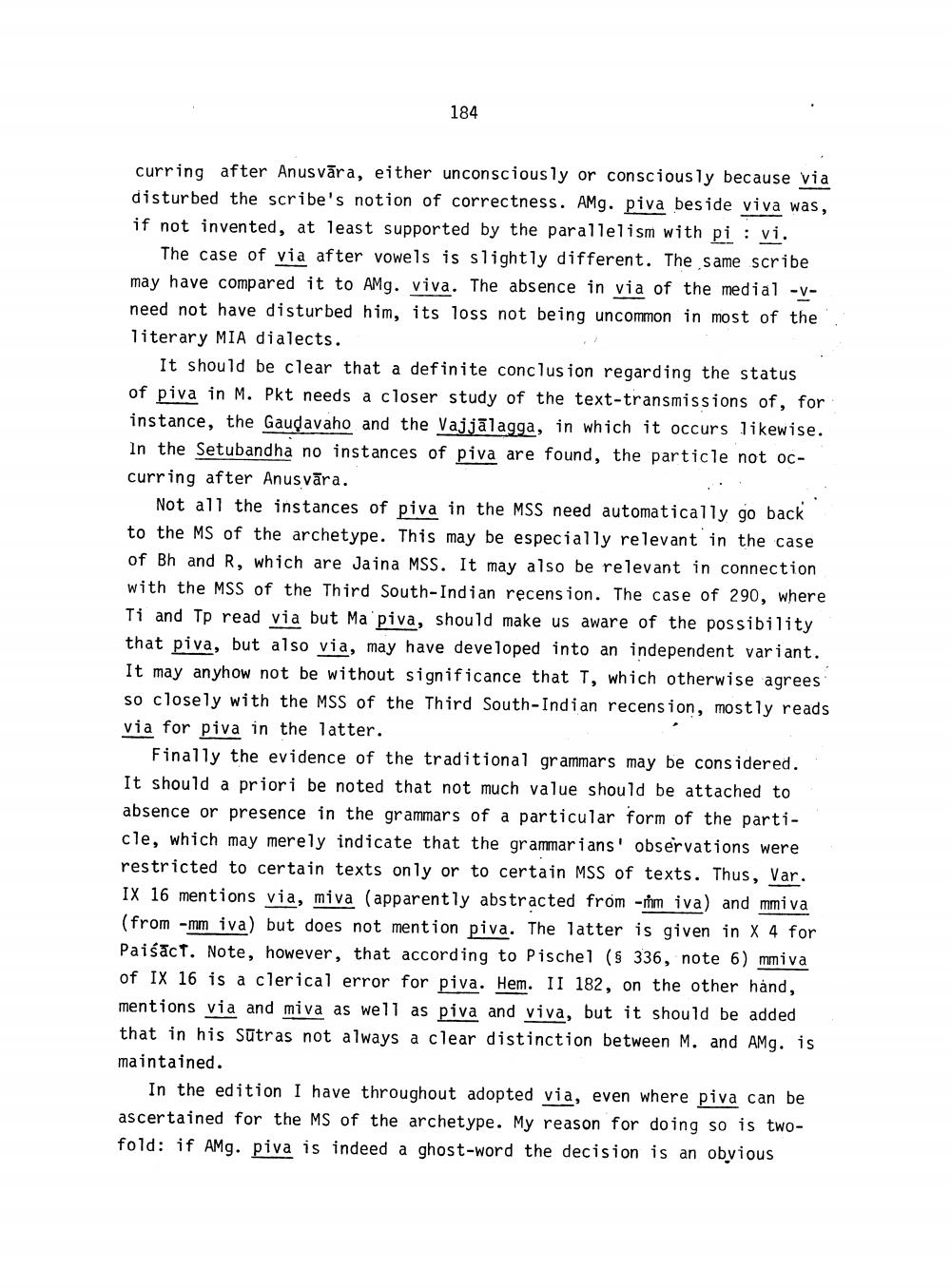________________
184
curring after Anusvāra, either unconsciously or consciously because via disturbed the scribe's notion of correctness. Ag. piva beside viva was, if not invented, at least supported by the parallelism with pi : vi.
The case of via after vowels is slightly different. The same scribe may have compared it to AMg. viva. The absence in via of the medial -vneed not have disturbed him, its loss not being uncommon in most of the literary MIA dialects.
It should be clear that a definite conclusion regarding the status of piva in M. Pkt needs a closer study of the text-transmissions of, for instance, the Gauqavaho and the Vajjālagga, in which it occurs likewise. In the Setubandha no instances of piva are found, the particle not occurring after Anusvāra.
Not all the instances of piva in the MSS need automatically go back to the MS of the archetype. This may be especially relevant in the case of Bh and R, which are Jaina MSS. It may also be relevant in connection with the MSS of the Third South-Indian recension. The case of 290, where Ti and Tp read via but Ma piva, should make us aware of the possibility that piva, but also via, may have developed into an independent variant. It may anyhow not be without significance that T, which otherwise agrees so closely with the MSS of the Third South-Indian recension, mostly reads via for piva in the latter.
Finally the evidence of the traditional grammars may be considered. It should a priori be noted that not much value should be attached to absence or presence in the grammars of a particular form of the particle, which may merely indicate that the grammarians' observations were restricted to certain texts only or to certain MSS of texts. Thus, Var. IX 16 mentions via, miva (apparently abstracted from -im iva) and mmiva (from -mm iva) but does not mention piva. The latter is given in X 4 for Paiśct. Note, however, that according to Pischel ($ 336, note 6) mmiva of IX 16 is a clerical error for piva. Hem. II 182, on the other hand, mentions via and miva as well as piva and viva, but it should be added that in his Sutras not always a clear distinction between M. and AMg. is maintained.
In the edition I have throughout adopted via, even where piva can be ascertained for the MS of the archetype. My reason for doing so is twofold: if AMg. piva is indeed a ghost-word the decision is an obyious




